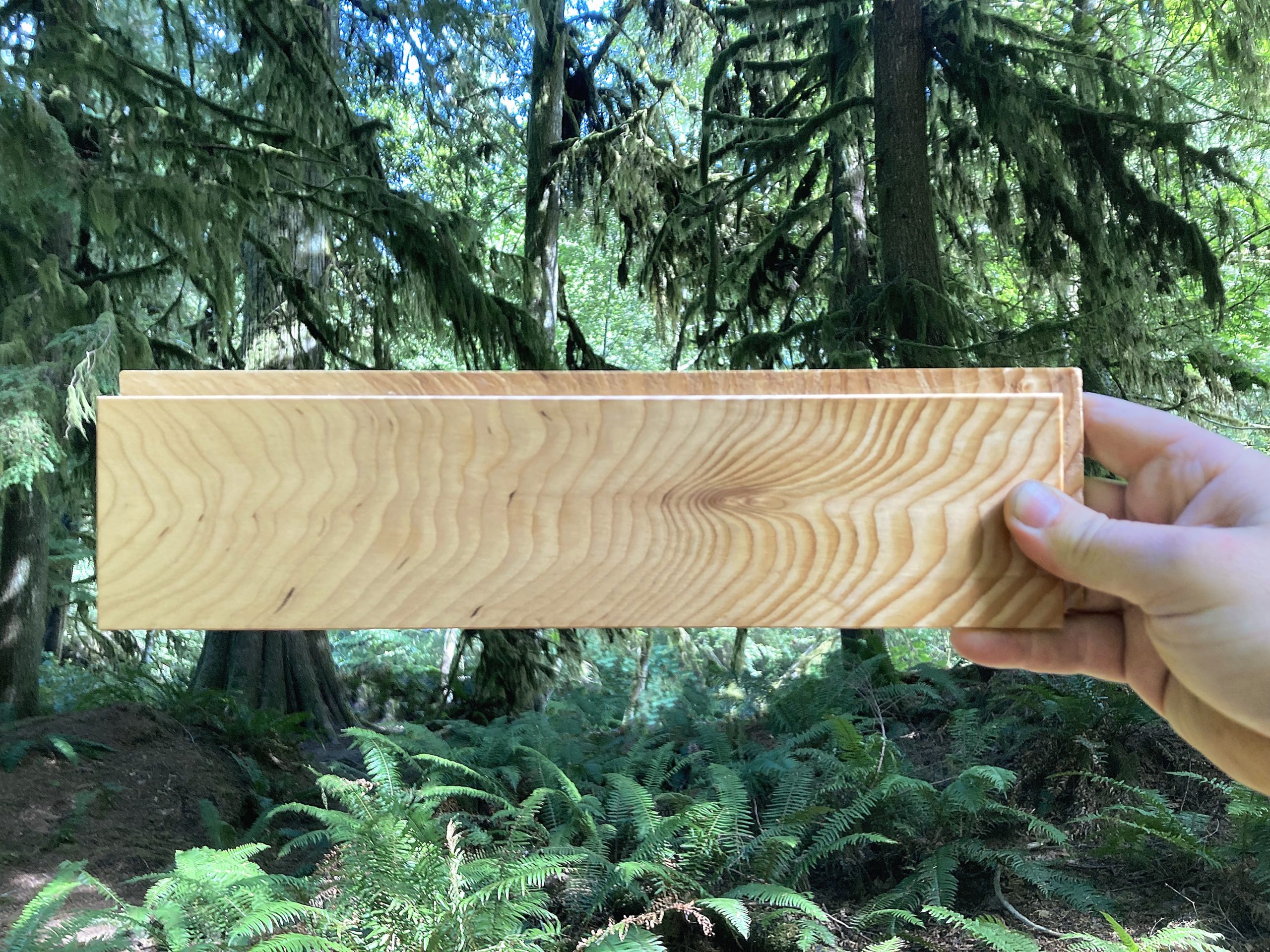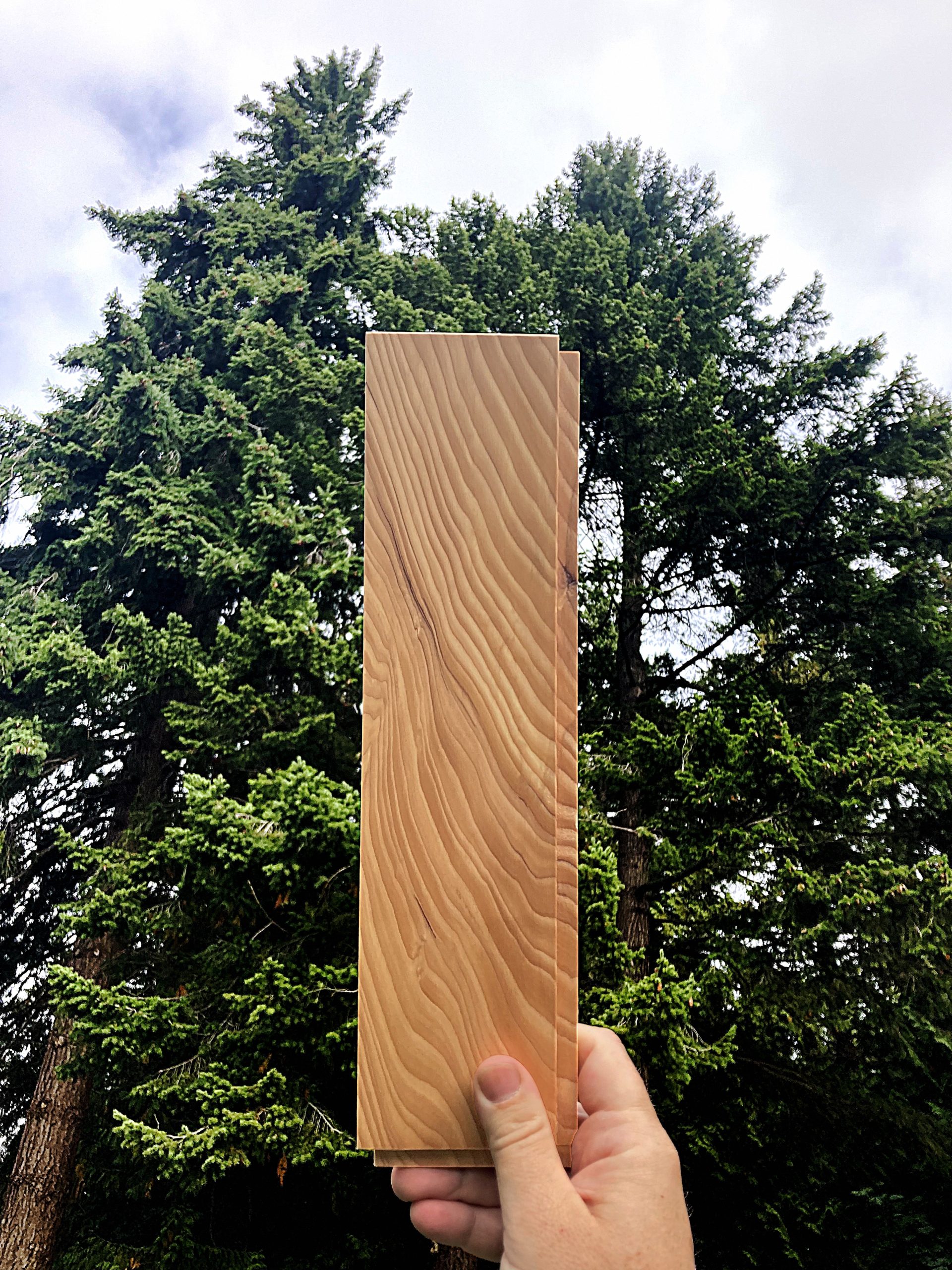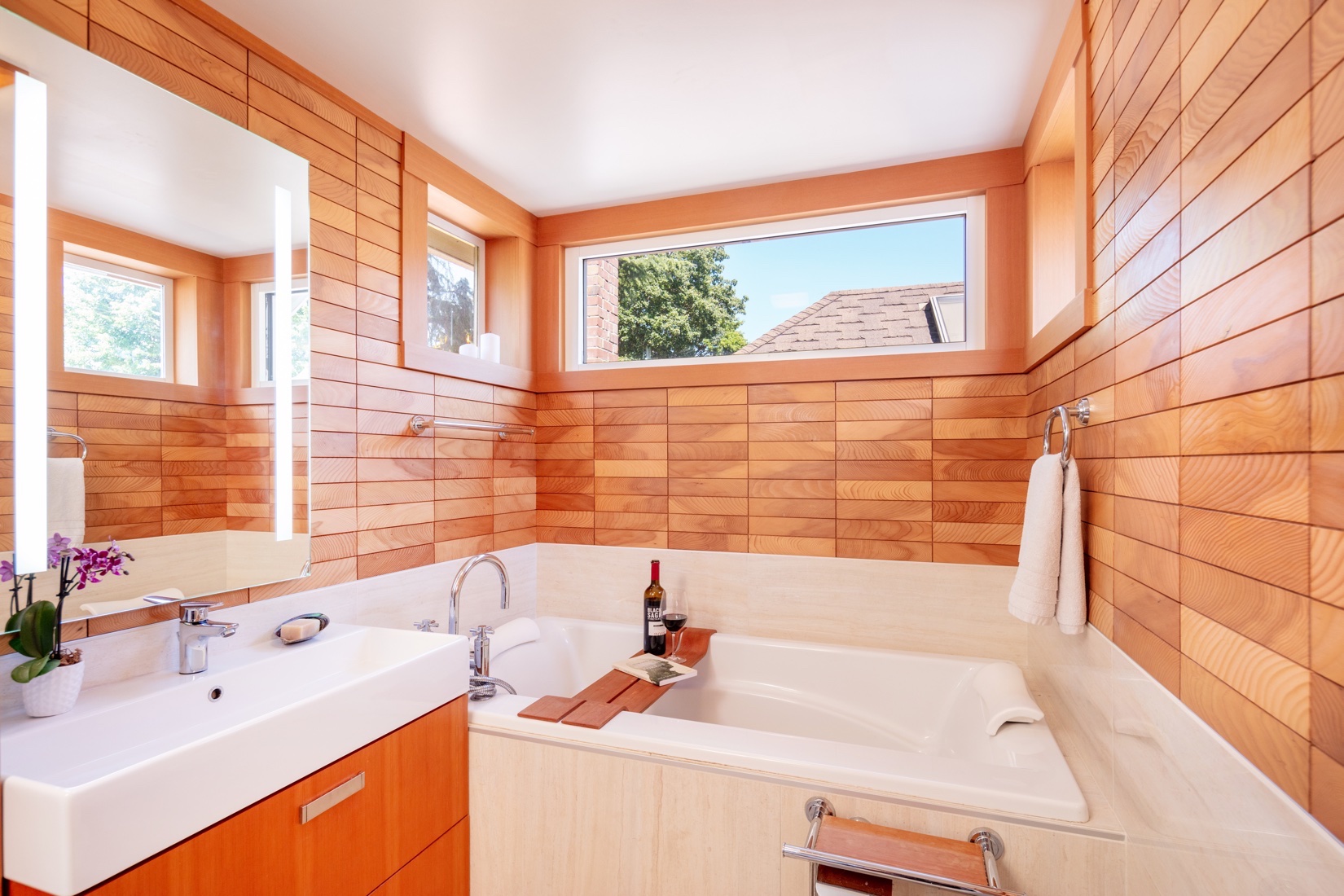Timber Tiles: Creating beauty and adding value one wooden wall tile at a time
Today’s forest industry is finding innovative ways to use every part of the tree and Timber Tiles, a new manufacturing company based out of Port Alberni, is a prime example of that. We spoke to Mark Anson, Owner of Timber Tiles, to learn more about how he is creating design-forward architectural wall tiles from BC wood that was previously thought to have little value.
Trained as an architect and working as a designer and builder, Anson served as an architectural design consultant with FP Innovations, before starting Timber Tiles. In this role, he was tasked with exploring ways that design could solve some of the biggest challenges that the BC forest industry faces today.
One project put forward by Western Forest Products involved finding a way to get more value from its wet hemlock. Anson said hemlock wood is one of the most beautiful woods available on Vancouver Island, and while it’s normally exported to Japan, there’s a certain percentage that goes through the kiln and doesn’t dry enough to meet export standards. Because these pieces get cut for the Japanese market, they are atypically shaped, and there’s no domestic demand for them. Some might call this wood “degraded or downgraded,” but Anson was confident that he could find a higher value use for this wood.
He experimented with cutting up the pieces of wood diagonally – a novel way of processing wood – and playing with geometry. After much trial and error, five years of research and development, Anson eventually came up with the idea of creating tiles and developed a type of tile that was not only beautiful but relatively simple to produce and would have broad market appeal. His hemlock Tsuga Tiles (the botanical name for hemlock) are durable, light in weight, easy to install, and sustainable.

Anson first displayed his tiles at IDS West, the interior design show in Vancouver, where many architects and designers became very excited about the product. But there was one problem, Anson wasn’t a manufacturer. That’s when Anson and his wife, Shelagh, decided to take the leap and invest in their own manufacturing facility in Port Alberni, something they never imagined doing.
 As an architect and design consultant, Anson has always been very eco-conscious, always trying to meet the highest levels of eco-friendly design, such as LEED Platinum Certification or Passive House Standard. When faced with designing his factory, he tried to implement a lot of those same principles and standards. His company is structured as a B Corporation, putting community, their workers, and the environment above profit and productivity, as well as a zero-waste factory. Anson believes it’s important to get third-party verification on all their claims to instill consumer confidence and support these important green programs that are only successful if manufacturers embrace them.
As an architect and design consultant, Anson has always been very eco-conscious, always trying to meet the highest levels of eco-friendly design, such as LEED Platinum Certification or Passive House Standard. When faced with designing his factory, he tried to implement a lot of those same principles and standards. His company is structured as a B Corporation, putting community, their workers, and the environment above profit and productivity, as well as a zero-waste factory. Anson believes it’s important to get third-party verification on all their claims to instill consumer confidence and support these important green programs that are only successful if manufacturers embrace them.
In terms of adding value, Anson says, “We increase the wood by approximately 20 times in value. For example, if I buy a lift for $1,000, I will be able to turn that one lift into packaged tiles worth $20,000. We also employ one person for every 50 cubic meters of wood that we process, whereas the industry standard in BC is one job created per 1000 cubic meters of wood harvested.”
With the company being able to create one tile every four seconds, it is now processing more wood than forest companies are getting in wet hemlock. In Anson’s dream world, he would love to set up an industry much like Italy used to have with their stone tile, where each region of Italy had a different specific stone. For example, in Haida Gwaii, there is red and yellow cedar suitable for exterior use or in the Peace River area, perhaps aspen or poplar could be utilized, and so on. 
While Anson is excited to have shipped his first load of palletized tiles just last month, he has a long-term vision for his company. “Five years from now, I would like to see this Port Alberni factory successfully exporting wooden tile around the world while at the same time creating a success story about a more sustainable and environmentally responsible way of manufacturing,” says Anson. “On a broader scale, I’d like to see a number of timber tile factories across BC, operating in association with us and guided by the same vision and values. Several communities, including First Nations, have already approached us to talk about potential opportunities, and I hope that we are going to find more and more communities who embrace this idea of creating a sustainable timber tile industry”.


